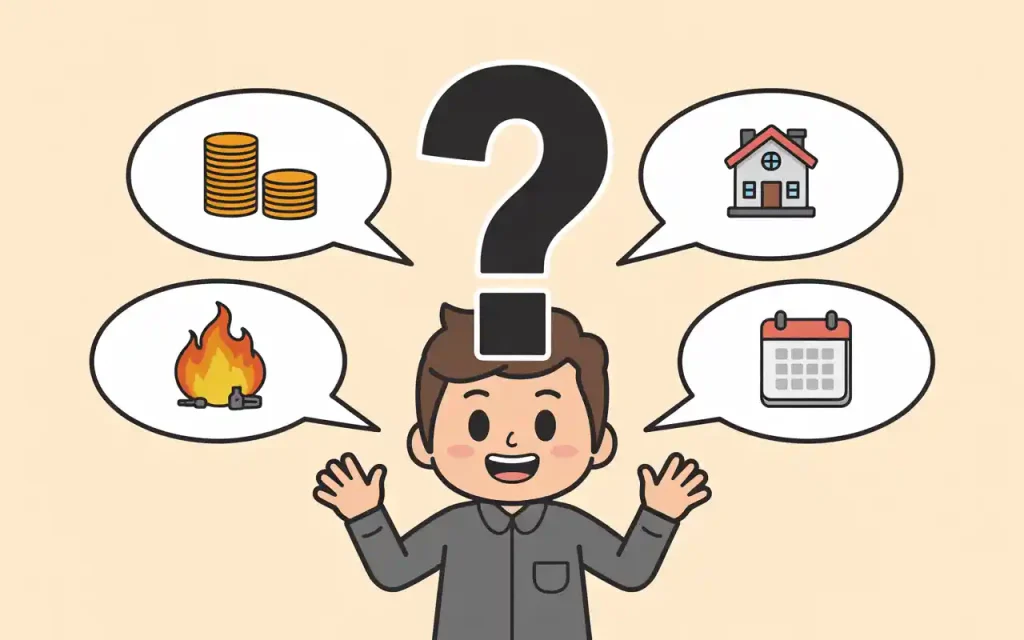How to Retire Early: The Basics of the FIRE Movement

INTRODUCTION
Retire Early with FIRE is a powerful idea that has changed how people think about work, money, and freedom. The FIRE movement—Financial Independence, Retire Early—challenges the traditional approach to retirement, which often means working until age 65 or beyond. Instead, FIRE followers aim to build enough wealth to leave the workforce much earlier, sometimes in their 30s or 40s. This movement is about more than just quitting your job; it’s about gaining control over your time, living intentionally, and having the freedom to pursue your true passions.
The roots of FIRE go back to the 1990s, inspired by the book Your Money or Your Life by Vicki Robin and Joe Dominguez. The book encouraged people to rethink every expense in terms of the hours worked to earn it.
Today, the FIRE movement has grown into a global community, supported by blogs, podcasts, and online forums where people share strategies, track progress, and celebrate milestones. While the promise of early retirement is appealing, the reality is more complex.

Achieving FIRE demands extreme savings, disciplined investing, and often, big lifestyle changes. It also comes with emotional and practical challenges, such as finding purpose after leaving work and managing risks like market downturns or unexpected expenses.
Let’s explore what the FIRE movement gets right, where it falls short, and what real-life stories reveal about the journey to financial independence.
Retire Early with FIRE: What the Movement Gets Right

- Smart Money Habits: FIRE teaches people to save aggressively, avoid debt, and invest for the long-term. These habits are useful for everyone, not just those aiming for early retirement.
- Clear Goals and Discipline: FIRE followers set a specific target—usually 25 times their annual expenses—and work methodically to reach it.
- Life Flexibility: Achieving financial independence means you can choose how to spend your days, whether that’s traveling, volunteering, or starting a new business.
- Community Support: The movement has created a supportive community where people share tips, celebrate wins, and help each other stay motivated.
- Intentional Living: FIRE encourages people to align their spending with their values, focusing on what truly matters and cutting out the rest.
Retire Early with FIRE: What the Movement Gets Wrong

- Extreme Frugality Isn’t for Everyone: Saving 50-75% of your income can be unrealistic or unhealthy for many, especially those with lower incomes or family obligations.
- Retirement Can Feel Empty: Many early retirees struggle with boredom or loss of purpose if they don’t have a plan for their time after work.
- Financial Risks: FIRE plans depend on steady investment returns and low inflation. Market crashes, health crises, or policy changes can threaten your financial security.
- Not Accessible to All: High earners have a much easier path to FIRE. For many, especially those with debts or dependents, the movement’s strict formulas are out of reach.
- Most Don’t Fully Retire: Many who achieve FIRE continue to work part-time, consult, or start businesses—not because they have to, but to stay engaged and fulfilled.
Types of FIRE
| FIRE Type | Description | Typical Lifestyle Example |
|---|---|---|
| Lean FIRE | Minimalist, ultra-frugal, very low expenses | Living on $25,000/year |
| Fat FIRE | High savings, but maintains a comfortable or luxurious lifestyle | Living on $100,000+/year |
| Barista FIRE | Partial retirement, combines savings with part-time or passion work | Working pa |
The Planning Process

1. Calculate Your FIRE Number
- Multiply your expected annual expenses by 25 (the “Rule of 25”)
- Example: If you need ₦10,000,000 per year, your FIRE number is ₦250,000,000
2. Build an Emergency Fund
- Save 3 to 6 months’ worth of expenses before investing aggressively
3. Invest Wisely
- Max out retirement accounts (e.g., 401(k), IRA)
- Consider tax implications and penalties for early withdrawals
4. Diversify Income Streams
- Rental income, dividends, side businesses, or part-time work can reduce risk and provide flexibility
5. Plan for Healthcare
- Early retirees must cover health insurance before government benefits kick in
- Factor in rising healthcare costs and potential emergencies
Common Pitfalls and How to Avoid Them

1. Overestimating Investment Returns
- Use conservative estimates for returns (e.g., 4% withdrawal rate may be too high for early retirees)
2. Underestimating Expenses
- Account for inflation, healthcare, taxes, and unexpected emergencies
3. Ignoring Lifestyle Needs
- Don’t sacrifice all present joys for future security. Balance saving with living
4. Lack of Social Planning
- Proactively build new social circles and hobbies before retiring
Real-Life Case Studies
Case Study 1: The Young Achiever

Lucas, a computer science graduate from a middle-class family, landed a tech job at 22. Inspired by FIRE, he lived simply—renting a modest apartment, driving an old car, and investing heavily in index funds. Despite peer pressure to spend more, Lucas stuck to his plan, reached financial independence in his early 30s, and now spends his time on hobbies and volunteering. His story shows that high income and discipline can make early retirement possible, but it requires sacrifice and a clear vision for post-retirement life.
Case Study 2: The Late Bloomer

Martha, a high school teacher, discovered FIRE at age 47 after a financial setback. She cut expenses, took on a side hustle, and started investing aggressively. By her mid-50s, Martha achieved financial independence, proving it’s never too late to change your financial future. Her journey highlights the importance of education, resilience, and adaptability on the path to FIRE.
Case Study 3: The Family Path

The Andersons, a family of five, were living paycheck to paycheck despite two stable incomes. After discovering FIRE, they downsized their home, cut unnecessary expenses, and involved their kids in money discussions. Over several years, they built up savings and investments, creating more security and flexibility for the whole family. Their story shows that FIRE is possible for families with teamwork and shared goals.
Case Study 4: Building Wealth Through Real Estate

Mark and Lisa, a married couple, chose real estate as their path to FIRE. They started by “house hacking”—living in one unit of a duplex and renting out the other. Over a decade, they built a portfolio of rental properties, generating enough passive income to achieve financial independence. Their story demonstrates the power of alternative investment strategies and the importance of patience and risk management.
Case Study 5: Entrepreneurship for FIRE

David, a former corporate executive, pursued FIRE by starting his own consulting business. He balanced part-time corporate work with entrepreneurship, saved aggressively, and invested in index funds. Within seven years, David reached financial independence, allowing him to focus on passion projects and enjoy a flexible lifestyle. His journey highlights the value of diversifying income streams and leveraging professional skills.
Quotes
- “FIRE is about more than just quitting your job; it’s about gaining control over your time and living intentionally.”
- “Even if you don’t retire early, building a large financial cushion reduces stress and gives you options.”
- “Extreme frugality can lead to burnout, stress, and missed life experiences.”
- “The most successful FIRE followers balance financial freedom with purpose, relationships, and personal growth.”
- “FIRE is about flexibility. If you need or want to return to work, you can.”
Highlighted Points
- FIRE stands for Financial Independence, Retire Early, and focuses on aggressive saving, smart investing, and intentional living.
- There are different types of FIRE: Lean FIRE (minimalist living), Fat FIRE (comfortable lifestyle), and Barista FIRE (part-time work after retiring early).
- The movement encourages good financial habits like tracking expenses, setting clear goals, and investing for the long term.
- Extreme saving and frugality are not realistic for everyone, especially those with lower incomes or family obligations.
- Financial independence gives you the freedom to choose how to spend your time, but early retirement can sometimes lead to boredom or a loss of purpose.
- FIRE plans depend on steady investment returns and careful risk management. Market downturns or unexpected expenses can threaten your financial security.
- Not everyone who achieves FIRE stops working completely—many continue with part-time work, consulting, or entrepreneurship for fulfillment.
- The planning process involves calculating your FIRE number, building an emergency fund, investing wisely, diversifying income, and planning for healthcare.
- Common pitfalls include overestimating investment returns, underestimating expenses, ignoring lifestyle needs, and not planning for social connections.
- Case studies show that FIRE is possible for young professionals, late bloomers, families, real estate investors, and entrepreneurs, but each path has unique challenges.
- The core lesson: Even if you don’t fully retire early, FIRE principles can help you build a stronger, more flexible financial future.
Frequently Asked Questions

Q1. What is financial independence?
Financial independence means having enough income from investments or passive sources to cover your living expenses for life, without needing a traditional job.
Q2. What is the 4% rule?
The 4% rule is a guideline for how much you can safely withdraw from your retirement savings each year. If you have saved 25 times your annual expenses, withdrawing 4% per year should allow your money to last at least 30 years, adjusting for inflation.
Q3. Is FIRE only for high earners?
While high earners can reach FIRE faster, anyone can apply its principles. The key is to increase your savings rate, cut unnecessary expenses, and invest wisely. However, the path is much harder for those with low incomes or high family obligations.
Q4. Do you have to stop working completely after achieving FIRE?
No. Many people who reach FIRE continue to work part-time, consult, or start businesses. The difference is they work because they want to, not because they have to.
Q5. What are the biggest risks of the FIRE movement?
Major risks include market volatility, unexpected expenses (like health emergencies), changes in personal goals, and underestimating the psychological impact of leaving work.
Q6. How do I start my FIRE journey?
- Track your expenses and income.
- Set a clear savings goal (your “FIRE number”).
- Cut unnecessary spending.
- Increase your income through side hustles or career growth.
- Invest in low-cost index funds, real estate, or other assets.
- Build an emergency fund and plan for healthcare costs.
Q7. What if my plans change after I retire early?
FIRE is about flexibility. If you need or want to return to work, you can. Many early retirees adjust their plans as life circumstances change.
Conclusion
The FIRE movement has inspired people worldwide to rethink their relationship with money and work. Its core lessons—discipline, intentional living, and strategic investing—can help anyone build a stronger financial future, even if full early retirement isn’t realistic for everyone. However, the journey demands sacrifice, careful planning, and a willingness to adapt when challenges arise. The most successful FIRE followers balance financial freedom with purpose, relationships, and personal growth.




